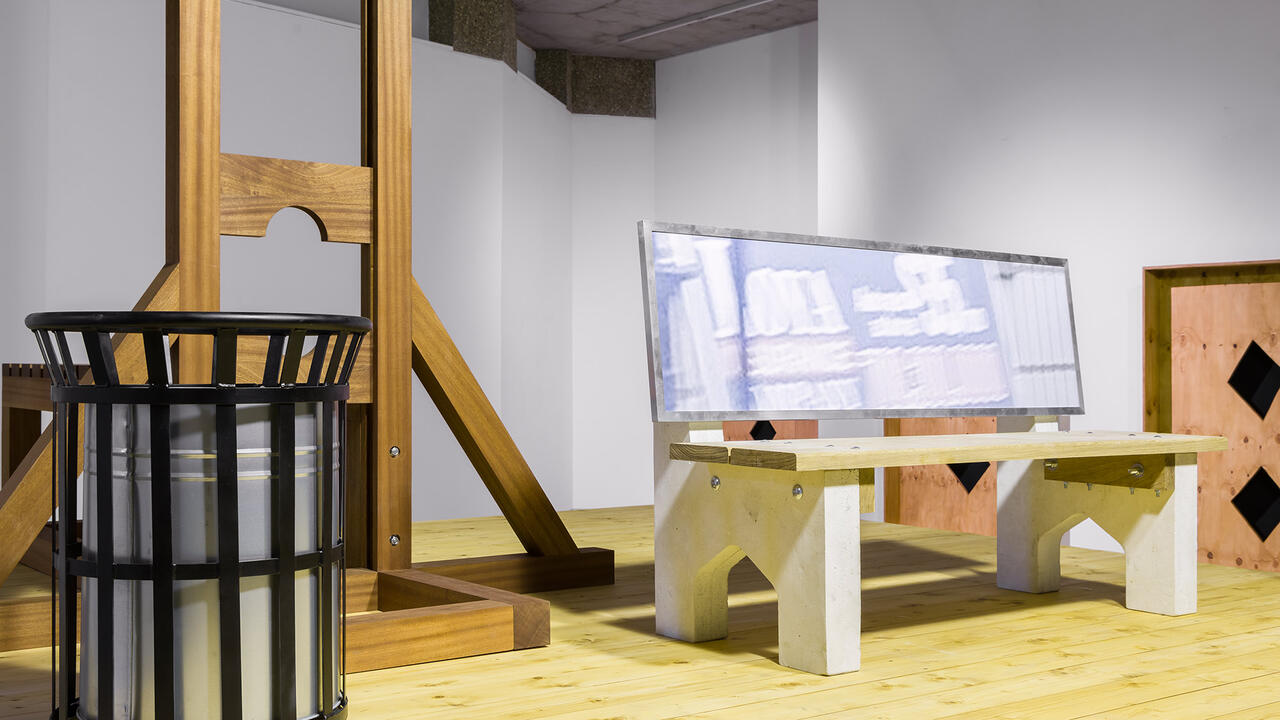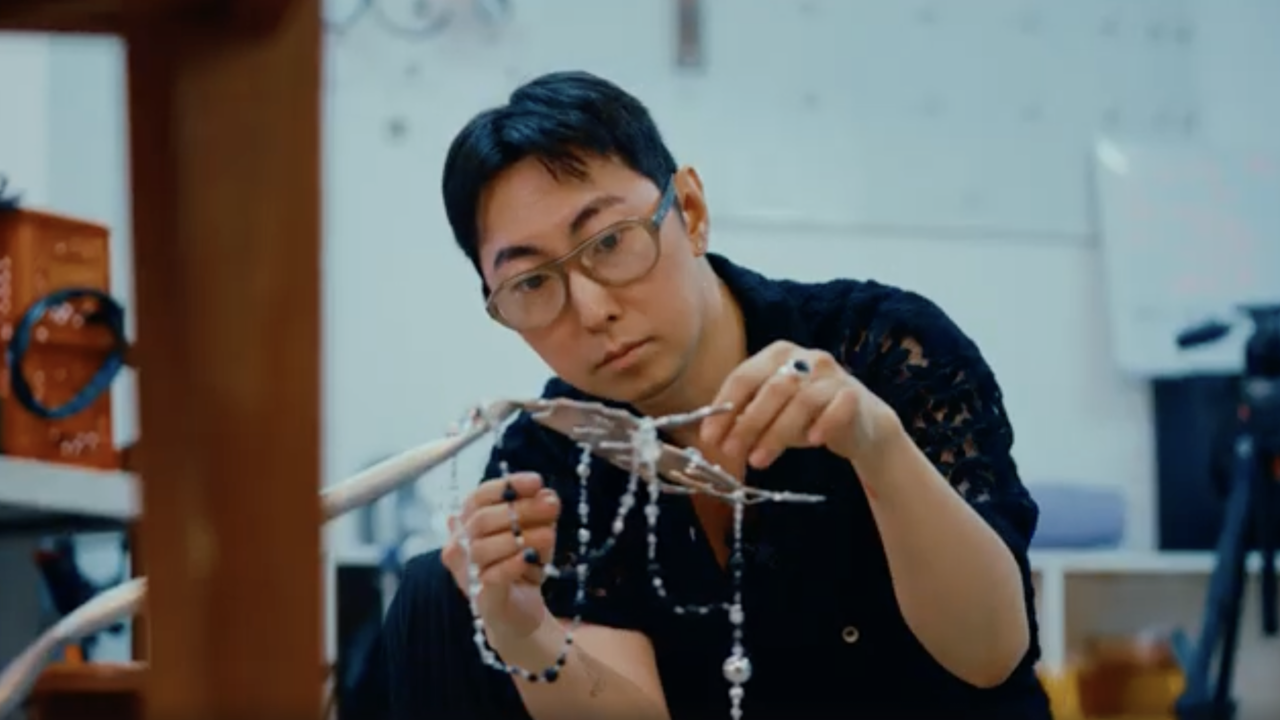Elke Krystufek

It was a pleasure to see Elke Krystufek break out of the stuffy confines of the studio with this show ‘Liquid Logic’. Over the past 15 years, the artist has produced a staggering number of self-portraits. Recently, however, she had clearly wearied of her signature motif of using mirrors and remote shutter release. For many commentators, the successful brand that had been selling like hot cakes since the artist’s masturbation performance, Satisfaction, in 1994, had run its course. At MAK, Krystufek utilized the objects and structures of the institution for the first time in her work, proving that her art need not accept accusations of narrow-minded narcissism, and that it goes beyond the identity debates of the 1990s.
For ‘Liquid Logic’, Krystufek spent a year searching the MAK archives, conducting interviews with curators, and accompanying conservation staff in their routine work. Unlike projects in institutional critique such as those by Andrea Fraser or Fred Wilson, however, this research was less interested in exposing dark sides or exclusions on the part of the museum. Instead, Krystufek relished a process of appropriation and re-evaluation culminating in an exhibition in a spiral layout, with vitrines containing archival items on the themes of ‘religion’, ‘marriage’, ‘vagina’, ‘pearl necklace’ and ‘brain’. This curious mix alone made the show worth a visit. The exhibits were flanked by new painted self-portraits depicting the artist as a doll-like object, alongside photographs of her posing naked with museum artefacts – such as the figure of an Indian deity or a monstrance – as if they were fittings in her boudoir. This reversal of public and private continued in Krystufek’s untidy studio kitchen, which she transferred to the exhibition space: a reference to the hyper-functional ‘Frankfurt kitchen’ on show at MAK, which was designed by the architect Margarete Schütte-Lihotzky in 1926, to encourage maximum household efficiency in line with Taylorist economic theories.
The unifying theme of the show could be described as ‘myth-making’. Artist legends were cleverly interwoven with enigmas of bygone cultures and archetypal gender narratives. At the centre of the exhibition, visitors were shown Dr. Love on Easter Island (2006), a video filmed in the Pacific. For this departure from familiar territory, Krystufek chose Bas Jan Ader as a kind of alter ego. What if, the video asks, the artist who disappeared during an Atlantic crossing in 1975 got stranded on Easter Island? As ‘She-Bas’, the artist roams the home of the famous moai stone giants. The tour is accompanied by a polemic that betrays Krystufek’s literary talent and her lack of illusions about the art world. A male voice, alias ‘Dr. Love’, plays the cynical art functionary who is interested only in ‘dead’ works. The artist defiantly champions the vitality of production against the grabbing hands of the museum. Dr. Love, the sadistic artist-super-ego, caustically remarks: ‘The archive is always winning’. In this light, the posthumous appreciation of Bas Jan Ader starts to look like grave-robbery.
Krystufek’s video touches on the search by artists for exotic authenticity and on academic constructs of foreignness. Max Ernst’s interest in Easter Island is hinted at. In the exhibition space, a raft referenced the voyages of discovery made by the anthropologist Thor Heyerdahl on such a craft, although Krystufek’s vessel had a vagina painted on its sail. In this part of the show, genitalia abounded. A huge piece of silk cloth showed metre-long penises in batik. In self-portraits, fleshy vaginas gaped where Krystufek’s nose or mouth should be – an unappetizing reference to Max Raphael’s interpretation of the figures on Easter Island as phalluses with vaginal slits on their faces. But Krystufek also exhibited applied art of her own: her book holders in the shape of a swastika, a menorah and a brain are intended to examine the way the meanings of symbols change.
While Krystufek’s new paintings remain true to her expressive style, these large-format bad paintings of the moai (Moai, 2006) move in a seemingly scatological direction. Every empty space in her pictures is covered with text. These superficially banal chains of associations repeatedly inquire into the role of the artist. Since the beginning of her career, Krystufek has been more radical than Tracey Emin or Sarah Lucas in combining her provocative posture with reflections on the kind of projections she invites. Her art must be considered now more than ever as a strategic play on prejudices and stereotypes; as ‘doing Feminism’ in a way that has successfully staged a brilliant striptease of the museum.
















